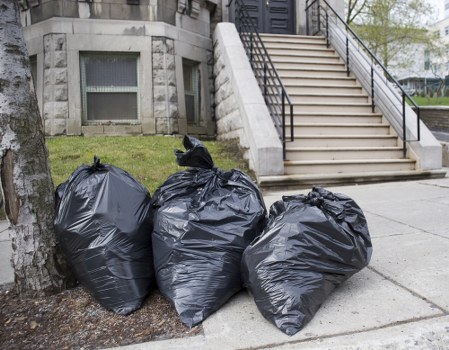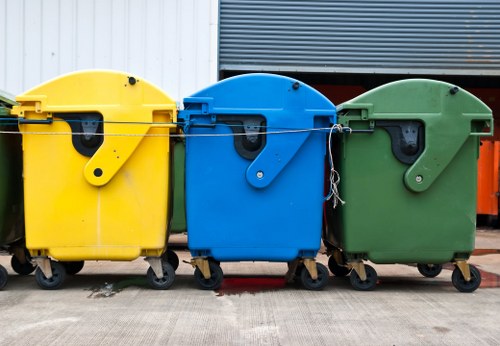Waste Clearance Woodlands

Maintaining the beauty and health of our woodlands is essential for environmental sustainability. Effective waste clearance woodlands practices ensure that these natural spaces remain vibrant and safe for both wildlife and humans.
Waste accumulation in woodlands not only spoils the aesthetic appeal but also poses significant threats to the ecosystem. From plastic litter to organic debris, improper waste disposal disrupts the natural balance.
Understanding the methods and importance of waste clearance in woodlands helps in preserving these areas for future generations. This article delves into the best practices, benefits, and local relevance of waste clearance in woodlands.
Why Waste Clearance is Crucial for Woodlands

Woodlands serve as vital habitats for numerous species, acting as carbon sinks and providing recreational spaces for people. However, without regular waste clearance, these areas can suffer from pollution and degradation.
Accumulated waste can lead to soil contamination, harming plant life and the animals that depend on them. Additionally, debris can obstruct natural water flow, leading to erosion and flooding.
Regular waste clearance helps maintain the natural integrity of woodlands, ensuring they continue to provide ecological and social benefits.
Effective Strategies for Waste Clearance

- Regular Monitoring: Frequent inspections help identify and address waste issues promptly.
- Community Involvement: Engaging local communities in cleanup efforts fosters a sense of responsibility and ownership.
- Proper Waste Disposal Facilities: Providing adequate disposal options prevents littering and illegal dumping.
- Educational Programs: Raising awareness about the impact of waste on woodlands encourages responsible behavior.
Tools and Equipment for Waste Clearance

Utilizing the right tools is essential for efficient waste clearance. Tools such as litter pickers, gloves, and containers facilitate the safe and effective removal of debris.
Additionally, machinery like skidders and loaders can assist in handling larger waste items, especially in extensive woodland areas.
Investing in proper equipment not only enhances the efficiency of waste clearance operations but also ensures the safety of those involved.
Benefits of Waste Clearance in Woodlands

Implementing waste clearance strategies yields numerous benefits. It helps preserve biodiversity by protecting habitats from pollution and invasive species introductions.
Cleaner woodlands attract more visitors, boosting local tourism and providing educational opportunities. Furthermore, maintaining these areas contributes to overall mental and physical well-being for the community.
From environmental preservation to economic advantages, the importance of waste clearance in woodlands cannot be overstated.
Challenges in Waste Clearance Efforts
Despite the benefits, waste clearance in woodlands faces several challenges. These include limited funding, harsh environmental conditions, and the vast areas that need to be covered.
Additionally, illegal dumping and lack of public awareness can hinder cleanup efforts. Overcoming these challenges requires collaborative efforts between government agencies, local communities, and environmental organizations.
Innovative solutions and sustained commitment are essential to address these obstacles effectively.
Local Relevance: Nearby Areas to Woodlands
Woodlands are surrounded by various neighborhoods and regions, each contributing uniquely to waste clearance efforts:
- Greenfield Park: Located adjacent to the eastern edge, Greenfield Park offers volunteer programs for woodland cleanup.
- Riverdale: Situated north of Woodlands, Riverdale has implemented successful recycling drives that benefit nearby woodlands.
- Lakeside: To the west, Lakeside provides additional storage facilities for collected waste from woodland areas.
- Maple Grove: Southeast of Woodlands, Maple Grove hosts annual environmental fairs promoting waste reduction.
- Sunnyvale: Southwest neighbor Sunnyvale collaborates with Woodlands on joint conservation projects.
- Oakridge: Northeast area Oakridge is known for its robust educational programs on sustainability.
- Pinecrest: Northwest Pinecrest contributes by supplying essential cleanup equipment to woodland teams.
- Cedar Heights: Northern Cedar Heights focuses on technological advancements in waste management for woodlands.
- Birchwood: Adjacent Birchwood emphasizes community engagement in ongoing waste clearance initiatives.
- Willowbrook: Southern Willowbrook offers logistical support for large-scale cleanup operations.
Each of these areas plays a pivotal role in supporting and enhancing waste clearance efforts in Woodlands, collectively fostering a cleaner and healthier environment.
Future of Waste Clearance in Woodlands
The future of waste clearance in woodlands hinges on sustainable practices and continuous community involvement. Embracing technologies such as waste tracking systems and eco-friendly disposal methods can revolutionize cleanup efforts.
Moreover, fostering a culture of responsibility and environmental stewardship ensures that waste clearance remains a priority. Investing in education and infrastructure will further strengthen these initiatives.
With dedicated efforts, woodlands can remain pristine sanctuaries for nature and people alike.
Conclusion
Waste clearance in woodlands is a critical endeavor that requires collective action and persistent dedication. By implementing effective strategies, overcoming challenges, and engaging local communities, we can safeguard these natural treasures for future generations.
Let’s commit to preserving our woodlands through responsible waste management, ensuring that they continue to thrive as vibrant ecosystems and serene retreats.
Frequently Asked Questions
1. What is waste clearance in woodlands?
Waste clearance in woodlands refers to the process of removing unwanted materials and debris from woodland areas to maintain their natural state and ecological balance.
2. Why is waste clearance important for woodlands?
Effective waste clearance prevents pollution, protects wildlife habitats, and preserves the aesthetic and ecological integrity of woodland environments.
3. How can communities participate in woodland waste clearance?
Communities can engage in volunteer cleanup events, support local conservation programs, and promote awareness about responsible waste disposal practices.
4. What challenges are faced in woodland waste clearance?
Challenges include limited funding, vast and difficult terrains, illegal dumping, and ensuring consistent community participation.
5. What are the long-term benefits of maintaining clean woodlands?
Long-term benefits include enhanced biodiversity, improved air and water quality, increased recreational opportunities, and sustained environmental health.